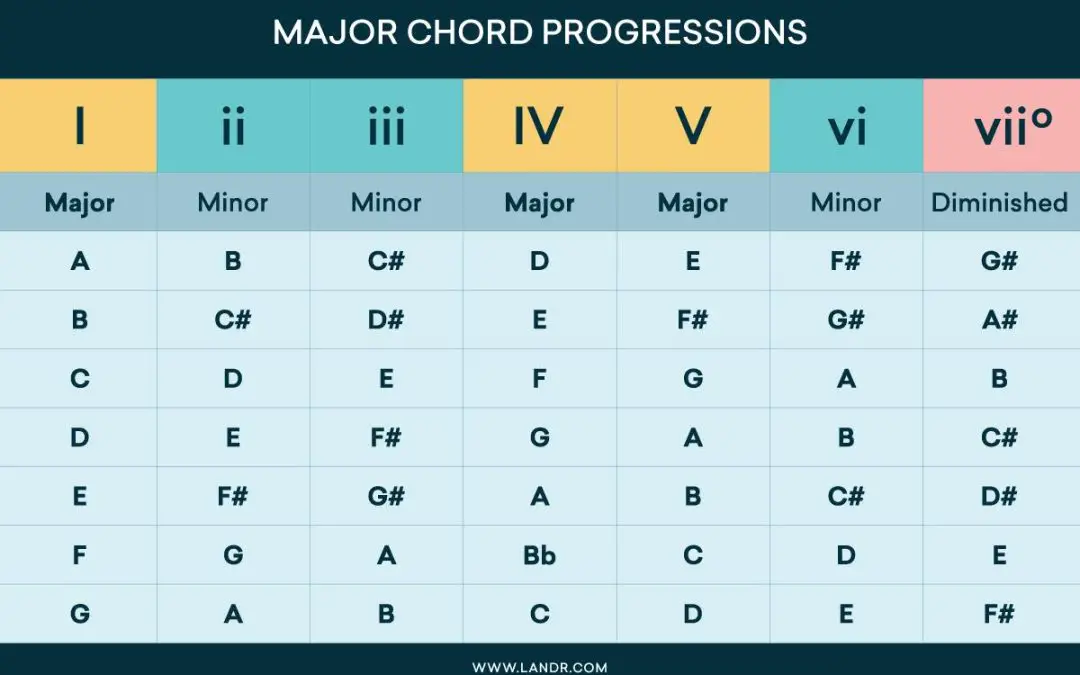Welcome to the ultimate guide for all you aspiring songwriters out there who are tired of playing the same old G-C-D progression on repeat. If your guitar skills are stuck in a musical rut and your songs are starting to sound as predictable as a Taylor Swift breakup song, fear not! Today, we are diving headfirst into the wonderful world of mastering guitar chord progressions. So strap in, tune up, and get ready to rock your way to songwriting stardom!
Contents
- 1 Understanding the Building Blocks of Chord Progressions
- 2 Exploring the Role of Key Signatures in Songwriting
- 3 Navigating Through the Circle of Fifths for Seamless Transitions
- 4 Incorporating Major and Minor Scales for Emotional Depth
- 5 Using major and minor scales in your music can add emotional depth, pushing your audience to feel something deeper than just the tunes in the background. Major scales, with their happy-go-lucky vibe, can bring a sense of joy and positivity to your composition. They’re like that friend who always knows how to cheer you up, no matter what. On the other hand, minor scales are the brooding introverts of the music world, bringing a sense of melancholy and drama to your piece. Together, they’re a dynamic duo that can take your audience on an emotional rollercoaster ride. When mixing major and minor scales in your music, you’re essentially playing with the audience’s emotions. It’s like being in control of a remote that switches between laughter and tears at the push of a button. By transitioning seamlessly between major and minor scales, you can create tension, release, and everything in between. So next time you’re working on a new composition, spice things up by incorporating major and minor scales. Play around with different combinations, experiment with unexpected transitions, and see how it affects the emotional depth of your music. Remember, music is not just about the notes on the page—it’s about the feelings they evoke in the listener. Harnessing the Power of Cadences to Conclude Musical Phrases
- 6 Advanced Techniques: Modal Interchange and Secondary Dominants
- 7 Crafting Unique Sounds with Extended and Altered Chords
- 8 FAQs
- 9 Rock On!
Understanding the Building Blocks of Chord Progressions
So you want to dive into the wonderful world of music theory and understand the building blocks of chord progressions? Well, you’ve come to the right place! Chord progressions are like the Lego bricks of music – you can mix and match them in endless ways to create beautiful harmonies that will make your ears dance.
First off, let’s talk about the basic chords that make up a chord progression. We’re talking about your I’s, IV’s, V’s – the holy trinity of chords that form the backbone of most songs. These chords are like the bread and butter of music, the OG’s that have been holding it down since the days of Bach and Beethoven.
Next up, we have the concept of tension and resolution. Think of tension as that feeling you get when you’re waiting for the next episode of your favorite TV show to drop – it keeps you on the edge of your seat, eager for what’s to come. And resolution? Well, that’s the sweet release, the satisfying cadence that brings everything full circle. It’s like finally getting that juicy plot twist you’ve been waiting for.
And finally, let’s not forget about the almighty chord progression formulas. These handy dandy cheat codes are like the secret sauce that can take your song from meh to masterpiece in no time flat. So whether you’re rocking a classic I-IV-V or getting fancy with a ii-V-I, remember that the possibilities are endless – so go forth and make some musical magic!

Exploring the Role of Key Signatures in Songwriting
Have you ever found yourself struggling to write a catchy tune for your next hit song? Well, look no further – key signatures are here to save the day! These little musical symbols may seem like just a bunch of random sharps and flats, but in reality, they hold the key (pun intended) to creating the perfect melody.
By understanding the role of key signatures in songwriting, you can unlock a whole new world of possibilities for your music. Imagine being able to effortlessly switch between major and minor keys, creating tension and release with just a few simple notes. With key signatures, the sky’s the limit!
So, next time you’re stuck in a songwriting rut, don’t fret – just remember the power of key signatures. Experiment with different keys to find the perfect fit for your song, and watch as your music transforms from mediocre to masterpiece in no time!
So, remember, when in doubt, don’t be afraid to play around with those little sharps and flats – you never know what musical magic you might discover!

So, you’re ready to level up your music game and master the mystical art of seamless transitions through the Circle of Fifths. Buckle up, because we’re about to make music theory more exciting than a dazzling DJ set.
First things first, remember the golden rule: Clockwise motion equals going up a fifth, while counterclockwise motion means going down a fifth. It’s like a musical dance party, but with less confetti and more notes.
Need some tips for a smooth journey through the Circle of Fifths? Here’s our secret stash:
- Experiment with different chord progressions to find the perfect flow.
- Practice transitioning between keys to build your skills like a musical ninja.
- Don’t be afraid to improvise and get creative – after all, rules are made to be broken in the world of music.
Now that you’re armed with knowledge and a touch of swagger, go forth and conquer the Circle of Fifths like a fearless explorer. Seamless transitions are within your reach – all you have to do is believe in the power of music and trust your instincts. Are you ready to rock the music world? Let’s do this!




